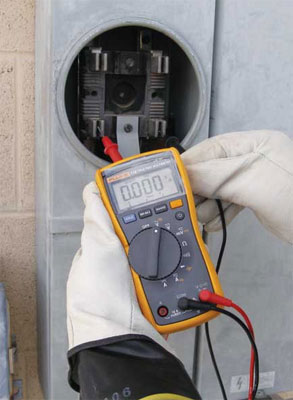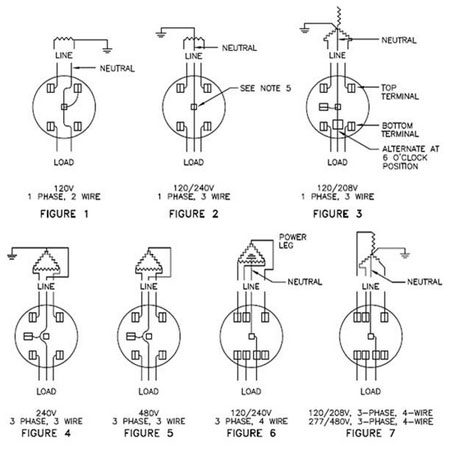Because meter sockets are now being installed on the other side of a customer’s load center, as part of PV installations, it is important for an inspector to understand the terminal configurations to help ensure the equipment was installed in a safe manner.
There are several reasons why a utility may require a performance meter.

- So the utility can have a clear picture of how much alternative generation is within their service territory in case the loads are transferred back to their distribution system.
- So the customer can monitor and measure the system’s performance and the quantity of electricity generated by the system. The meters will display cumulative energy produced and retain this data during power outages.
- In renewable energy incentive programs designed to motivate customers to invest in renewable energy sources, the performance meters ensure the customers are compensated for the energy they produce.
Meter Form Numbers and Socket Configurations

Customers with light to medium loads can be served with self-contained meters; the termself-containeddescribes everything needed to measure the load is contained inside the meter. Whereas large industrial customers usually require transformer-rated meters, the termtransformer-rateddenotes instrument transformers CT and PTs will be installed along with the meter.
Typical form types for self-contained are designated 1S, 2S, 12S, and 16S; and transformer-rated meters are designated 3S, 5S, 6S, and 9S.
Form 1S Meter
This meter is designed to meter the standard 2-wire 120-V residential service.
Common Mistakes. The meter socket is incorrectly wired; the two wires from the inverter should be connected on the top two terminals of the socket, and the wires leading towards the customer’s load center on the bottom two terminals.
Form 2S Meter
This meter is designed to meter the standard 3-wire 120/240-V residential service.
Common Mistakes. The form 2S meter is often misapplied on a 3-wire network system. Networking refers to using 2 phases and a neutral from a 4-wire wye three-phase bank to provide 3 wires similar to a single-phase service.A form 2S meter cannot deal with the three-phase phase angles present in this type of service.The form 12S meter is required for self-contained network metering.
Form 12S Meter
This meter is designed for 3-wire services but not 120/240 single-phase services. The meter is often installed on straight three-phase services when no neutral wire is used.
This meter can also be used for 3-wire network system. Networking refers to using 2 phases and a neutral from a 4-wire wye three-phase bank to provide 3 wires similar to a single-phase service.

Photo 2. Form 12S meter
Key Points for Metering. In network applications connect the neutral wire to the 5th terminal inside the meter socket.
Common Mistakes. Often, a form 2S 240-V (house meter) meter is mistakenly used for this type of single-phase service. Although this is a 3-wire service, the form 2S meter is incapable of dealing with the phase angles provided by the three-phase transformer bank.Only 75% registration will result during balanced loading conditions resulting in a loss of revenue.
The customer equipment connected phase-to-phase must be rated for 208 volts not 240 volts as in the typical 3-wire single-phase service.
Form 16S Meter
This service is commonly used for small commercial applications and is designed for 4-wire services, either wye or delta.
Key Points for Metering. Be sure to connect the neutral to the 7th terminal inside the meter socket.
Common Mistakes. Line- and load-side wires are swapped; remember the inverter is the source and should be connected to the line-side connectors.
Conclusion
Your local utility is a great resource for information and has a vested interest in making sure the process flows smoothly for everyone involved. Make it a point to check with the local utility to see if they have any specific requirements for equipment being installed or a list of approved equipment.













Find Us on Socials